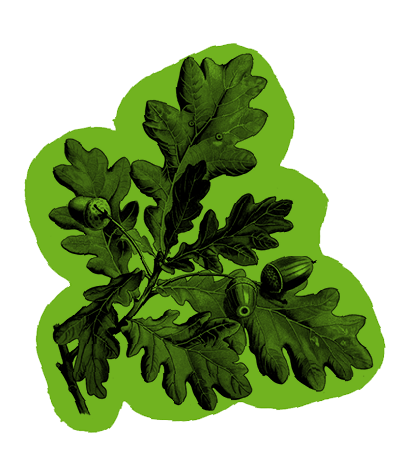Rewild the Ghost Woods FAQS
dig a little deeper into the history of our woodlands…

What are Ghost Woods?
After the Second World War there was a timber crisis in the UK and government organisations like Forestry England were enlisted to help solve the problem by creating new timber plantations. Over the twentieth century around 40% of the UK’s ancient woodlands were cut down and replaced with plantations of non-native tree species to produce timber – these are the Ghost Woods. We now know what a tragic loss this was and luckily we have a chance to revive our Ghost Woods.
Ghost Woods, or Plantations on Ancient Woodland Sites (PAWS), contain traces of their ancient pasts which means their restoration is far more likely to create highly biodiverse native woodlands than creating new woodlands from scratch. These traces includes ancient woodland species, veteran trees, non-artificially fertilised soils and remnants of fungal networks. The soil of Ghost Woods also contains the seedbank of certain ancient woodland species.
Restoring Ghost Woods has the potential to almost double the amount of ancient woodland in the UK!
What are Ancient Woodlands?
Ancient Woodlands (aka Ancient Semi-Natural Woodlands) are woodlands that have had continuous tree cover since 1600. Given the nature of woodlands, it is unlikely that more than a few trees will have been alive in 1600 and instead it is the long life of the woodland that provides essential habitats. Over their long lives these woods will have experienced human intervention in some way, such as coppicing or pollarding and so are often sites of living archaeology.
On top of their cultural value ancient woodlands as an entire ecosystem (rather than individual veteran trees) are of immense ecological importance. Rare and endangered species (also known as ancient woodland indicators) occur at a far greater frequency in ancient woodlands, than new woodlands or plantations.

Ancient woodland covers around 1,445,566 acres of the UK or 2.4% of the UK’s land area, and around 59% of this is in England. Ancient woodland (including Plantations on Ancient Woodland Sites) is considered the highest value of woodland by the UK government, and classified as ‘irreplaceable habitat’. The restoration of ecologically degraded ancient woodland like PAWS is considered the top priority for the UK Government.

Why should we restore ancient woodlands?
When our ancient woodlands were cut down and replaced with non-native monocultures in the years following the wars we lost more than just native tree species. Our ancient woodland ecosystems have developed for more than 400 years. These woodlands are the living, breathing survivors of human history, preserving the partnership between our ancestors and woods into the present day. They are home to some of our most beloved and endangered wildlife; heartbreaking research by the Woodland Trust shows that 1 in 3 woodland species are in decline, and 1 in 10 are at risk of extinction with the loss of vital habitats playing a huge role in this. Ancient woodland supports more biodiversity than any other land-based habitat in the UK, meaning PAWS restoration has the potential to unlock huge areas for nature to thrive in. PAWS often contain remnants and relics of species from their native past which can no longer move freely in the surrounding landscapes. This genetic diversity has the potential to support a broader ecosystem recovery, and makes PAWS restoration beneficial to more than just the woodlands it is being undertaken in.
Native woodlands support a vast array of biodiversity in comparison to conifer plantation; research shows that when canopy cover increases from 0% broadleaf species to 20% the number of plant species increases by 63%. One of the reasons PAWS lack so much biodiversity is because of the monocrop nature of the plantation which is made up of far fewer tree species, but is also homogenous in terms of age. Ancient woodland, due to the generally light management, often contains a diverse range of tree ages and species, providing vital and rare habitats such as deadwood stands which commercial, monoculture plantations often lack. Research shows that around a fifth of woodland species rely on deadwood habitats!
On top of the essential role that ancient woodland plays in hosting biodiversity, ancient woodlands have an outsized ability to store carbon in comparison to other types of woodland; 36% of all woodland carbon in living trees is stored in ancient woodlands despite only making up 25% of woodland – of this 62% is stored in broadleaf trees versus 38% in conifers. Within organisations working on PAWS restoration there is an acknowledged need for research into the amount of carbon stored within the soil of ancient woodland and for comparative work to be done looking at PAWS and ASNW. Existing research shows that around 70% of carbon stored in woodlands is stored in the soil, suggesting that ancient woodlands, due to their less disturbed soil, likely store far more than 36%!
Who are Forestry England?
Forestry England are the biggest landowners in England and manage 105,000 acres of Ghost Woods – that’s 32% of all English PAWS!
Forestry England was established in 1919 under the banner of the Forestry Commission and was given a mandate to replenish the UK’s forests and woodlands which had been severely depleted during the First World War (in 1919 woodland cover was at an all time low of just 5% of the UK). Over the following decades the Forestry Commission bought up land and undertook extensive reforestation and afforestation projects for the purpose to supplying timber.
Today the Forestry Commission has split into 3 bodies: Forestry England, Forestry Research and Forestry Services. Forestry England controls English forests and woodlands whilst Wales and Scotland have their own governing bodies.

Forestry England control over 617,700 acres of land in England, producing around 1.2 million tonnes of timber annually. Of that land, only 47,000 acres are broadleaf woodland and of that only 34% is in favourable condition (below the national average of 49%). The creation of the Forestry England Wilding Team and Core Wilding Areas, as well as on-going commitment to PAWS restoration suggest Forestry England is moving in the right direction, but need our pressure to ensure we resurrect our Ghost Woods in time.

What commitments do Forestry England already have?
Forestry England, as a government agency and the largest manager of English woodland, are subject to the DEFRA commitments set out in the Keepers of Time reports. The first of these was published in 2005, and set 2020 as the target for “[t]he majority of PAWS [to be] either being improved or under gradual restoration to native woodland.” This target was missed by Forestry England without much public attention or outrage.
The second Keepers of Time report from 2022 set a new commitment for Forestry England to restore or start restoring “the majority of plantations on ancient woodland sites to native woodland by 2030”, and states that the government has a duty to “support Forestry England to … ultimately restore all plantations on ancient woodland sites to resilient native woodland”. This duty to resurrect our dying Ghost Woods is being failed by both Forestry England and the government, despite further commitment to restoration in the Environmental Improvement Plan in 2023.
It’s clear that government commitments aren’t enough to bring back our Ghost Woods.
What about our timber production?
The UK imports around four times more timber than it produces. A large portion of this import is for Drax (a biomass) power station, which consumes around 6 billion tonnes of wood pellets per year, 20 times more pellets than the entire UK production. Drax is also the UKs single largest producer of carbon dioxide, with their energy production emitting more carbon than coal per kWh of electricity.
We don’t want timber production to be exported outside the UK where it could be used to justify the destruction of woodlands elsewhere – but ancient woodlands shouldn’t need to be surrendered. Instead, we should be reducing our consumption, and creating more plantations on non-ancient woodland sites.


Don’t plantation forests provide a safe haven for red squirrels?
Despite a widely held belief that conifer plantations provide a habitat for red squirrels, research shows that in some places they are now having a detrimental impact on the red squirrel population. Red squirrels have been driven off their native, mixed-leaf woodlands, into conifer plantations because of the invasive grey squirrel, not because it is their ideal habitat. The reestablishment of pine martens into British forests has had a landscape positive impact on red squirrels by predating on grey squirrels, especially in broadleaf, native woodland. However, in conifer plantations where there is less prey to hunt, the pine martens predate on the red squirrels. On top of the fact that mixed-canopy woodland is the ideal habitat for red squirrels, this research shows that conifer plantations are not the answer to protecting this native species. Instead, establishing healthy ecosystems (like ancient woodlands) will allow our charismatic native species to thrive.
Why does the Ghost Wood campaign only focus on England?
As the name suggests, Forestry England only manages land in England. In 2003, management of the public forest estate in Scotland, England and Wales was split between three different bodies (one for each country).
Forestry England is the biggest landowner in England and manages over 105,000 acres of Ghost Woods. Whilst there are Ghost Woods in Scotland and Wales, their management is different and requires their own targeted campaigns.
If you are in Scotland and would like to do something to help protect your Ghost Woods, the Woodland Trust are running a campaign that you can get involved in.

